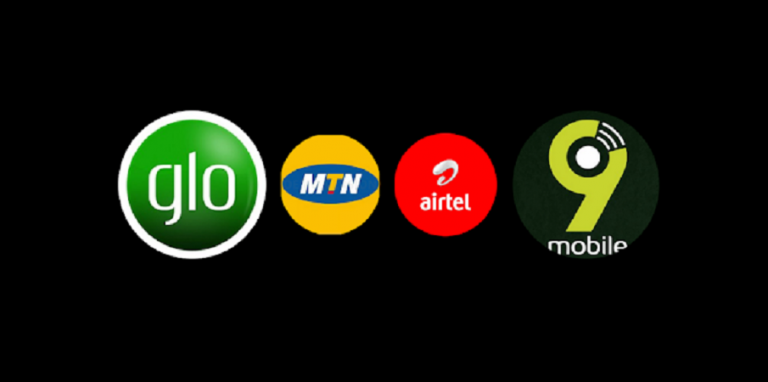
Accessible telecommunications and communication in Nigeria could ignite a revolution—economically, socially, and politically—by unlocking the potential of a population over 200 million strong. The pieces are already in motion: telecoms like MTN, Airtel, Glo, and 9mobile have driven mobile penetration to 82% of Africa’s telecom subscribers, per 2024 NCC data, with active subscriptions hitting 222 million. But accessibility—affordable, reliable, and widespread—remains the spark that could turn this connectivity into transformative fire. Data’s still a luxury for many; at 800 Naira ($0.50) per gigabyte in 2023, it’s a chunk of income for the 40% below the poverty line.
Telcos could slash this—India’s Jio flooded the market with dirt-cheap plans, boosting penetration from 20% to 60% in five years. Nigeria’s National Broadband Plan aims for 390 Naira ($0.25) by 2025, and Starlink’s satellite internet is already shaking up rural pricing. If telcos pair this with subsidized smartphones—say, via installment plans like Kenya’s Safaricom—digital entry barriers crumble. A 10% jump in mobile internet penetration could lift GDP per capita by 2.5%, per the IFC, adding $180 billion continent-wide by 2025.
Coverage is the next fuse. Urban hubs like Lagos hum with 5G, but rural areas—home to 40 million unconnected Nigerians—lag with spotty 2G or nothing.
The government’s plan for 7,000 new towers by 2025 could bridge this, especially if telcos lean on shared infrastructure (IHS Towers controls 60% of the market) and solar-powered base stations to dodge Nigeria’s shaky grid. Pair that with mesh networks or satellite links—Starlink’s now in 80 countries—and you’ve got a web that reaches the hinterlands. Kenya’s M-Pesa exploded because rural farmers got connected; Nigeria’s fintech could do the same, with mobile money already at $500 million monthly via telcos like MTN.
Register for Tekedia Mini-MBA edition 17 (June 9 – Sept 6, 2025) today for early bird discounts. Do annual for access to Blucera.com.
Tekedia AI in Business Masterclass opens registrations.
Join Tekedia Capital Syndicate and co-invest in great global startups.
Register to become a better CEO or Director with Tekedia CEO & Director Program.
Communication itself—fast, open, encrypted—could light the match. X, WhatsApp and Telegram already fuel grassroots movements; #EndSARS in 2020 showed how digital defiance can mobilize millions. Accessible telcos could amplify this, offering cheap, secure platforms for dissent or innovation. Imagine encrypted voting apps, like Estonia’s, hitting Nigeria’s elections—Trump’s 2025 order pushes paper, but digital could leapfrog that if trust holds. Education and health follow: teleclinics and e-learning, already growing via Glo’s data bundles, could scale if bandwidth’s universal.
The tinder’s dry—Nigeria’s young, tech-hungry population (60% under 25) and a telecom sector growing 15.7% in Q1 2024, per NBS. But risks loom; power outages, regulatory red tape, and telco debt could smother it. Still, if MTN’s 5G rollout or Glo’s rural push hit critical mass, this isn’t evolution—it’s a revolution. Economic inclusion, political voice, and social equity could erupt from a SIM card and a signal. High data costs in Nigeria are indeed a chokehold on innovation and education, strangling potential before it can breathe. At 800 Naira ($0.50) per gigabyte in 2023—down from $2 a decade ago but still steep for a country where 40% live on less than $1.90 daily—it’s a tax on ambition. For a student streaming a lecture or a coder testing an app, that’s hours of income burned just to stay in the game.
Startups—Nigeria’s pulled $1.8 billion in venture capital in 2024, per Partech—rely on cloud tools, APIs, and real-time testing. A developer in Ibadan debugging via AWS or GitHub can blow 4,000 Naira ($2.50) weekly on data, half a rural teacher’s wage. Compare that to India, where Jio’s $0.06-per-GB plans fueled a startup boom: 100,000 new ventures in five years. High costs here mean talent stays offline or scales slow—Flutterwave and Paystack thrived despite this, but how many more could’ve sparked? The World Bank pegs a 10% broadband boost to 1.38% GDP growth in developing nations: Nigeria’s losing billions to this bottleneck.

Education’s hit harder. Over 10 million kids are out of school, per UNESCO, and e-learning could bridge that—except data’s a wall. A 1-hour Zoom class chews 1.5 GB, or 1,200 Naira ($0.75); for a family of three students, that’s a week’s food budget. Free platforms like Khan Academy or local EdTech like uLesson get choked too streaming a math video isn’t free if your data’s gone. South Africa’s MTN zero-rated educational sites in 2020, spiking usage 40%; Nigeria’s telcos haven’t followed. Result? Rural kids stay analog, and urban ones ration learning. A 2023 GSMA study found 20% higher literacy rates tied to affordable internet—Nigeria’s missing that shot.
Telcos like MTN and Airtel rake in $3 billion yearly, per NCC, but competition’s lazy—four players dominate 97% of the market. The Broadband Plan’s 390 Naira ($0.25) target by 2025 is a pipe dream without regulatory teeth or a Jio-style disruptor. Starlink’s $40 monthly rural plans hint at pressure, but uptake’s slow—5,000 users by Q1 2025. Meanwhile, 40 million unconnected Nigerians, mostly young, are locked out of digital classrooms and codebases. Cut data to $0.10 per GB, and the dam breaks. Coders build apps, not excuses; students stream, not dream. Lagos could rival Bangalore; rural Enugu could birth the next fintech unicorn. High costs aren’t just a nuisance—they’re a silent assassin of Nigeria’s future.







